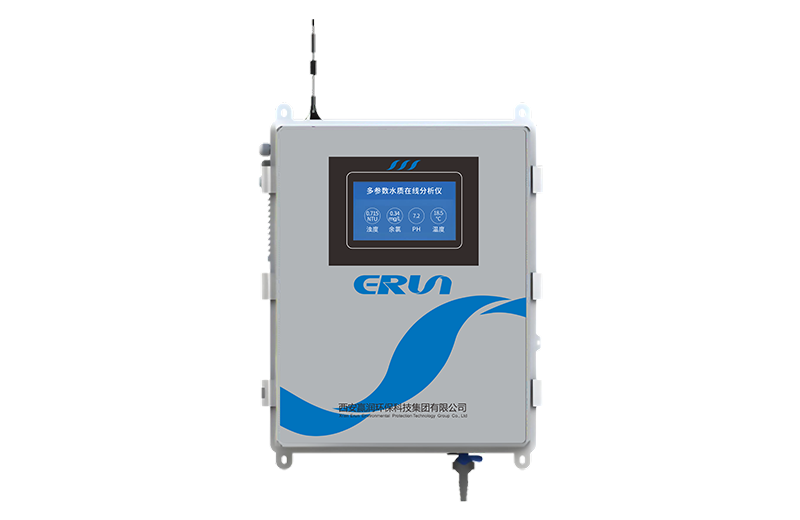Access to safe drinking water is a fundamental human right and a cornerstone of public health. However, contamination from microbiological, chemical, or physical sources poses significant risks, potentially leading to waterborne diseases or chronic health issues. International standards, such as the World Health Organization’s (WHO) Guidelines for Drinking-water Quality (GDWQ), provide a framework for ensuring water safety, but effective monitoring is critical to their implementation. This article explores the importance of drinking water quality monitoring, key parameters, challenges, and how advanced systems like the ERUN-WQS-6022 Drinking Water Quality Monitoring System (learn more) address these challenges to protect public health.
Drinking water quality monitoring involves systematically measuring physical, chemical, and microbiological parameters to ensure water is safe for human consumption. Regular monitoring is essential to detect contaminants early, prevent health risks, and comply with regulatory standards. Without consistent monitoring, issues like bacterial contamination or toxic chemical buildup may go unnoticed, endangering communities.

The WHO GDWQ outlines critical parameters to monitor, which are summarized below:
| Parameter | Significance | WHO Guideline Value (Example) |
|---|---|---|
| E. coli | Indicates fecal contamination; must be absent to ensure safety. | 0 per 100 mL |
| pH | Affects taste and pipe corrosion; ideal range is neutral. | 6.5–8.5 |
| Turbidity | Measures water clarity; high levels may indicate pathogens. | ≤5 NTU |
| Total Dissolved Solids (TDS) | Impacts taste and health; high levels suggest mineral or pollutant presence. | ≤600 mg/L |
| Nitrates/Nitrites | Linked to agricultural runoff; high levels can cause health issues like methemoglobinemia. | 50 mg/L (nitrate) |
| Fluoride | Essential for dental health; excess causes fluorosis. | ≤1.5 mg/L |
| Heavy Metals (e.g., Lead, Arsenic) | Toxic at low levels; can cause neurological and other health issues. | ≤0.01 mg/L (arsenic) |
These parameters ensure water is safe, palatable, and free from harmful substances. Monitoring frequency and methods vary based on local regulations and water source types.
The WHO GDWQ, particularly the fourth edition incorporating the first and second addenda (2022), is the global benchmark for drinking water quality. It advocates for:
Health-Based Targets: Setting standards based on local environmental, social, and economic conditions.
Water Safety Plans (WSPs): A preventive risk management approach from catchment to consumer.
Independent Surveillance: Ensuring compliance through regular audits and testing.
Other standards include:
EU Drinking Water Directive (2020): Legally binding standards for EU member states, including limits for PFAS and microplastics.
U.S. EPA Safe Drinking Water Act (2023): Sets enforceable standards for public water systems, with maximum contaminant levels (MCLs) for over 90 contaminants.
These standards guide national regulations, but variations exist due to local priorities, creating challenges for consistent monitoring.
Ensuring safe drinking water faces several obstacles:
Varying Standards: Differences in national regulations complicate global consistency. For example, permissible levels for arsenic may differ significantly between countries.
Resource Constraints: Developing regions often lack the infrastructure, trained personnel, or funding for regular testing.
Time Delays: Traditional laboratory-based testing is slow, delaying responses to contamination events.
Emerging Contaminants: New pollutants like PFAS require updated monitoring protocols.
These challenges highlight the need for efficient, accessible, and real-time monitoring solutions.
Advanced monitoring systems address these challenges by providing real-time, multi-parameter data. The ERUN-WQS-6022 Drinking Water Quality Monitoring System is a prime example, offering:
Multi-Parameter Monitoring: Measures pH, turbidity, conductivity, dissolved oxygen, and more in a single device.
Real-Time Alerts: Instantly notifies users of deviations from standards, enabling rapid response.
User-Friendly Design: Simplifies operation for both professionals and non-experts.
Portability: Suitable for fixed installations or mobile use in remote areas.
Standards Compliance: Aligns with WHO and other international guidelines.
Such systems reduce reliance on slow laboratory processes and empower communities to monitor water quality effectively.
Advanced monitoring systems have transformed drinking water management worldwide:
Rural Africa: In Ethiopia, portable monitoring systems have enabled communities to test groundwater sources regularly, identifying bacterial contamination and improving treatment processes (Babiso et al., 2023).
Urban Utilities: In the U.S., real-time monitoring systems helped a water utility detect a chlorine residual drop, preventing a potential outbreak (EPA, 2018).
Industrial Settings: In Bangladesh, continuous monitoring ensured compliance with WHO standards, reducing health risks from arsenic contamination (Journal of Health, Population and Nutrition, 2016).
Endorsements: Water utilities and environmental agencies have praised systems like the ERUN-WQS-6022 for their reliability and ease of use. A water treatment plant manager noted, “Real-time monitoring has revolutionized our ability to ensure safe water, saving time and resources.”
Safe drinking water is critical to public health, but achieving it requires robust monitoring to meet international standards like the WHO GDWQ. Challenges such as varying regulations and resource limitations can be overcome with advanced technologies. The ERUN-WQS-6022 Drinking Water Quality Monitoring System provides a reliable, user-friendly solution for real-time monitoring, ensuring compliance and protecting communities. To learn more about how this system can enhance water safety, visit ERUN-WQS-6022.